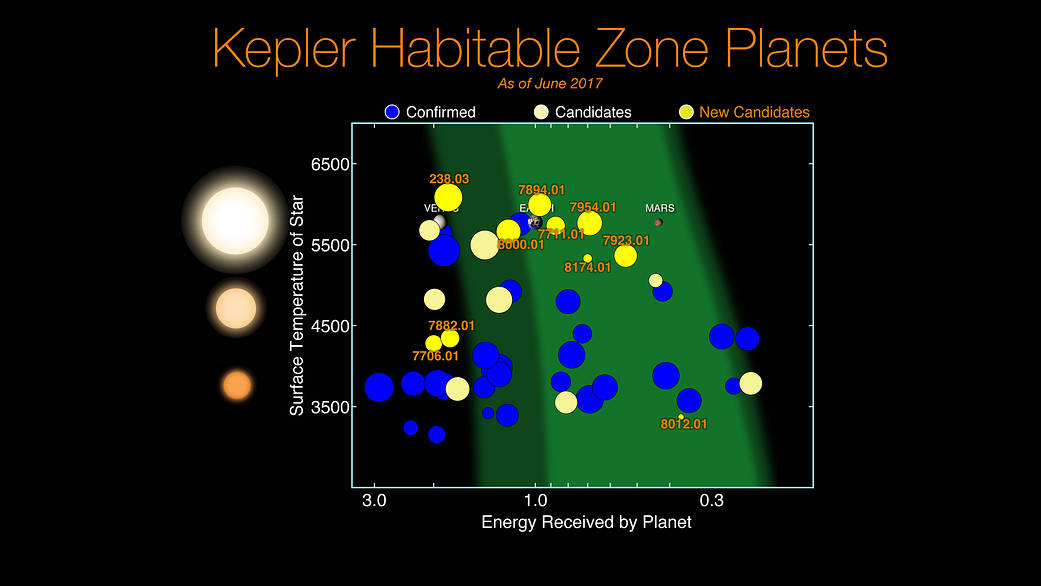Highlighted are new planet candidates from the eighth Kepler planet candidate catalog that are less than twice the size of Earth and orbit in the stars’ habitable zone – the range of distances from a star where liquid water could pool on the surface of an orbiting planet. The dark green area represents an optimistic estimate for the habitable zone, while the brighter green area represents a more conservative estimate for the habitable zone. The candidates are plotted as a function of their stars’ surface temperature on the vertical axis and by the amount of energy the planet candidate receives from its host star on the horizontal axis. Brighter yellow circles show new planet candidates in the eighth catalog, while pale yellow circles show planet candidates from previous catalogs. Blue circles represent candidates that have been confirmed as planets due to follow-up observations. The sizes of the colored disks indicate the sizes of these exoplanets relative to one another and to the image of Earth, Venus and Mars, placed on this diagram for reference. Note that the new candidates tend to be around stars more similar to the sun – around 5,800 Kelvin – representing progress in finding planets that are similar to the Earth in size and temperature that orbit sun-like stars.
Image credit: NASA/Ames Research Center/Wendy Stenzel





























